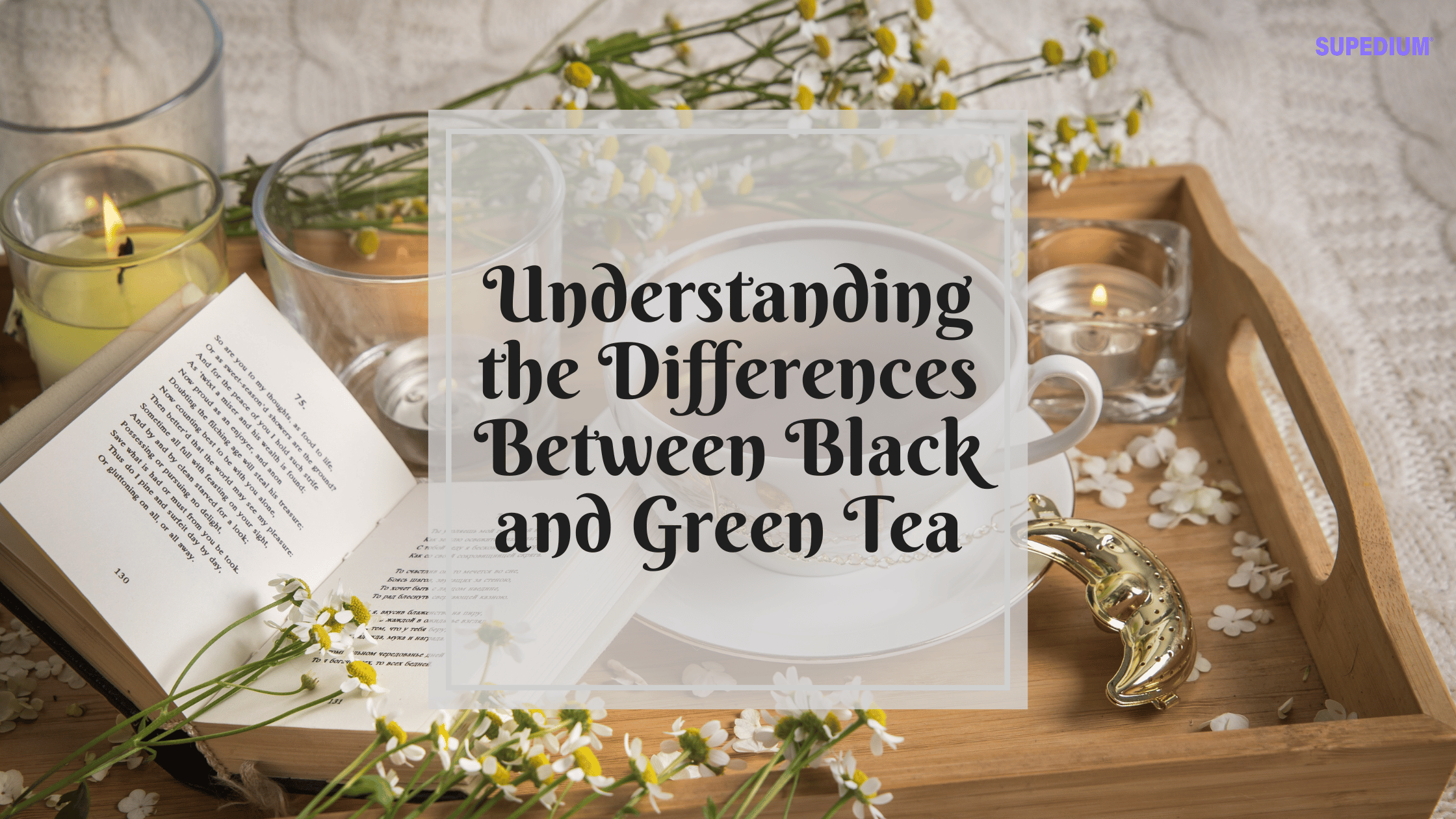Table of Contents
![]()
I. Introduction
Tea is one of the most consumed beverages in the world, cherished for its rich flavors, diverse varieties, and potential health benefits. Among the myriad types of tea, black tea and green tea stand out as two of the most popular. While they share a common origin from the Camellia sinensis plant, the differences between them are significant in terms of processing, flavor, nutritional content, and cultural significance. This article aims to delve into these distinctions, enhancing your understanding and appreciation of these beloved beverages.
II. Origins of Black and Green Tea
A. Historical Background
The origins of tea can be traced back to ancient China, where it was discovered by Emperor Shen Nong around 2737 BCE. Over the centuries, tea became embedded in the cultures of various regions, leading to distinct practices and preferences. Black tea is believed to have originated in the Fujian province of China during the early Ming dynasty, while green tea has been consumed in China for thousands of years, revered for its medicinal properties.
B. Plant Source
Both black and green tea come from the same plant, Camellia sinensis. The variations in the type of tea produced are primarily a result of differences in processing methods rather than the plant itself. Factors such as the region in which the tea is grown, the specific cultivar, and the climate all contribute to the final product.
III. Processing Techniques
A. Black Tea
The processing of black tea involves several key steps:
- Withering: Freshly plucked leaves are spread out to wither, allowing moisture to evaporate and softening the leaves.
- Rolling: The withered leaves are rolled to break down their cell walls, releasing essential oils and enzymes.
- Oxidation: This critical step involves exposing the rolled leaves to air, allowing them to oxidize and develop their characteristic dark color and robust flavor.
- Drying: Finally, the oxidized leaves are dried to stop the oxidation process and preserve the tea.
B. Green Tea
Green tea undergoes a different processing method:
- Steaming or Pan-Firing: The freshly picked leaves are quickly steamed or pan-fired to prevent oxidation, preserving their green color and fresh taste.
- Rolling or Shaping: The leaves are then rolled or shaped to enhance flavor and appearance.
- Drying: Finally, the leaves are dried to lock in their qualities.
C. Comparison of Processing Effects
The methods used to process black and green tea lead to fundamental differences in flavor, aroma, and appearance. Black tea typically has a stronger, more robust flavor due to oxidation, while green tea retains a lighter, more delicate taste characterized by grassy or vegetal notes.
IV. Flavor Profiles
A. Black Tea
Black tea is known for its bold and robust flavor. Common tasting notes include malty, fruity, and sometimes even smoky characteristics. Popular varieties such as Assam, Darjeeling, and Earl Grey each offer unique profiles that cater to a range of palates. Assam is rich and malty, while Darjeeling is often described as muscatel with floral hints.
B. Green Tea
Green tea, on the other hand, is celebrated for its fresh and sometimes grassy flavor. Varieties like Sencha, Matcha, and Jasmine offer a range of experiences—from the umami-rich taste of Matcha to the fragrant floral notes of Jasmine. The taste is generally lighter and can sometimes carry a slight bitterness if brewed improperly.
C. Influence of Processing on Taste
The difference in processing techniques between black and green tea significantly impacts their flavors. The oxidation process in black tea develops deeper, richer flavors, whereas the minimal processing of green tea preserves the natural qualities of the leaves.
V. Nutritional Content and Health Benefits
A. Antioxidants and Polyphenols
Both black and green teas are rich in antioxidants, particularly polyphenols, which are believed to provide various health benefits. Green tea typically contains higher levels of catechins, a type of antioxidant, while black tea contains theaflavins and thearubigins, formed during oxidation. Research suggests that both types can contribute to improved heart health and reduced inflammation.
B. Caffeine Content
Caffeine content varies between the two types of tea. Generally, black tea contains more caffeine than green tea, though specific levels can vary depending on the variety and brewing method. On average, an 8-ounce cup of black tea contains about 40-70 mg of caffeine, while green tea typically contains 20-45 mg. This makes black tea a stronger option for those seeking a caffeine boost.
C. Other Nutrients and Compounds
In addition to antioxidants, tea provides various vitamins, minerals, and amino acids. Notably, green tea contains L-theanine, an amino acid that promotes relaxation without drowsiness. This compound can enhance focus and concentration, making green tea a popular choice for those seeking a balanced energy boost.
VI. Cultural Practices and Consumption
A. Traditional Consumption Methods
The preparation and consumption of black and green tea can differ significantly across cultures. Black tea is often brewed strong and served with milk or sugar, particularly in British and Indian cultures. In contrast, green tea is usually enjoyed plain or with a hint of lemon, reflecting its lighter profile.
B. Popularity in Different Cultures
Black tea is deeply embedded in British and Indian cultures, often associated with afternoon tea traditions and chai. Green tea, however, holds a special place in East Asian cultures, particularly in Japan and China, where it is often linked to tea ceremonies and mindfulness practices.
VII. Practical Considerations
A. Brewing Techniques
Brewing the perfect cup of tea requires attention to water temperature and steeping time. For black tea, water should be brought to a rolling boil (around 200-212°F or 93-100°C) and steeped for 3-5 minutes. Green tea, conversely, is best brewed with water that is slightly cooler (around 160-185°F or 71-85°C) for 2-3 minutes to avoid bitterness.
B. Storage and Shelf Life
Proper storage is crucial to maintain the quality of tea. Both black and green teas should be stored in an airtight container away from light, heat, and moisture. Generally, black tea has a longer shelf life (up to 2-3 years) compared to green tea, which is best consumed within 6 months to a year for optimal flavor.
VIII. Conclusion
In summary, black tea and green tea offer distinct experiences rooted in their processing, flavor profiles, nutritional content, and cultural significance. Understanding these differences can enhance your appreciation of tea and help you select the right type for your tastes and health needs. Whether you prefer the robust notes of black tea or the delicate flavors of green tea, both are worthy of exploration and enjoyment.
Share This





Be the first to comment